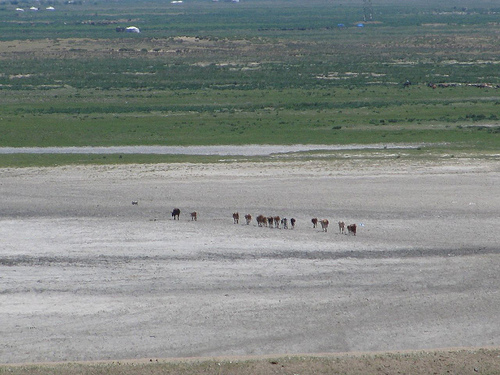OK, so we’re trying an experiment, siphoning off Nibbles about research, often in peer-reviewed journals, into their own hi-falutin’ cookie jar. We’ll probably publish once a week. And being here doesn’t mean we won’t revisit them later.
- Genetic diversity of a parasitic weed, Striga hermonthica, on sorghum and pearl millet in Mali. The parasite is diverse, but no differences in parasitized fields.
- Genetic differentiation among Sri Lankan traditional rice (Oryza sativa) varieties and wild rice species by AFLP markers. Four major clusters agree with morphology.
- Genetic variation in farmed populations of the gilthead sea bream Sparus aurata in Greece using microsatellite DNA markers. Farmed are less diverse and less heterozygous.
- Restoration of hay meadows on ex-arable land: commercial seed mixtures vs. spontaneous succession. No difference in long-term diversity, but there are other considerations.
- Bio-available zinc in rice seeds is increased by activation tagging of nicotianamine synthase. It works.
- Soil fauna alter the effects of litter composition on nitrogen cycling in a mineral soil. It’s complex; larger fauna affect N dynamics.
- Dry matter yield, nitrogen content, and competition in pea–cereal intercropping systems. Intercrops are more productive and deliver higher forage quality.
So what do you reckon? Is this worthwhile?
